This is a LONG post about the best diet for a cat with kidney disease.
There are a lot of options and there’s not necessarily a “right” answer!
My own 14-year-old cat Scout was diagnosed with early Stage 2 Chronic Kidney Disease in May 2019.
First things first, I am not a vet. Anything you choose to follow here should be discussed with your cat’s vet. This article is information to add to your ongoing research. You are the best advocate for your own cat.
IN THIS POST:
- Best diet for cats with kidney disease – what cats need
- Is protein bad for cats with kidney disease?
- What I feed my cat with kidney disease
- Raw diet for cats with kidney disease
- Hills K/D feline and Royal Canin prescription diets
- Commercial diets for cats with kidney disease
- Best food for dogs with kidney disease
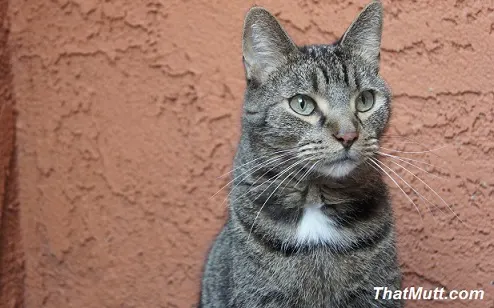
Best diet for cats with kidney disease – what cats need
For a cat with kidney disease, you should feed a high-moisture food that is low in phosphorus.
Traditionally, most veterinarians will recommend a diet for cats with chronic kidney disease (CKD) that is:
- high moisture
- low phosphorous
- low or moderate protein
The tricky part is the protein. Should you feed low protein or more moderate protein? I personally believe a raw diet with moderate protein is healthiest for cats with kidney disease, but I’ll get to that below.
Let’s look at each of the above bullets in more detail.
Lots of water for cats with kidney disease
One of the most important things for your cat with kidney disease is to make sure he’s drinking a lot of water.
You can help your cat get more water by:
- Providing your cat with multiple water bowls in different locations
- Buying a pet water fountain
- Feed mostly raw or canned food
- Add a tablespoon of water to meals
- If you must feed dry food, add water to it
Eventually, some cats with more advanced kidney disease will need additional fluids through an IV.
Low phosphorus food for cats with kidney disease
It’s important for cats with kidney disease to eat a diet low in phosphorus.
If you feed your cat a kidney support prescription diet, it will be low in phosphorus.
Limiting phosphorus in a CKD cat’s diet helps to delay the progression of kidney disease. This is because the kidneys of a CKD cat can no longer excrete excess phosphorous the way a healthy cat does.
Eventually, a cat with kidney disease will have high levels of phosphorus in their blood which may cause a lack of appetite and weakness.
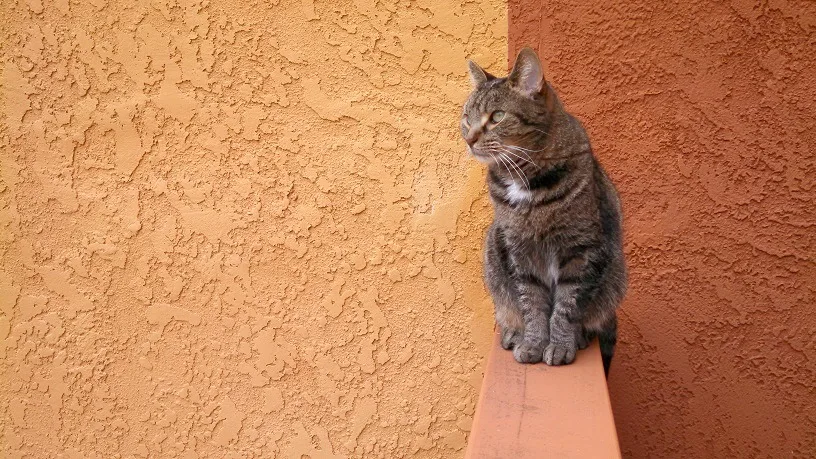
How much phosphorus is OK for a cat with kidney disease?
If you feed your cat a prescription diet specifically for cats with kidney disease, the phosphorus level will be low enough.
Always ask your cat’s vet, but here is the info I have found:
Phosphorus by dry matter basis – around .4 to .6%
The kidney support prescription foods I mention in this article all have a phos level of around .4 to .6% on a dry matter basis.
Some people may choose to feed a non-prescription option for whatever reason, which I only recommend with the support of your cat’s vet. In that case, you want to find a food that has a phosphorus range on a dry matter basis around .5 to .7%.
This article recommends a phosphorus range on a dry matter basis for cats with kidney disease as .3 to .6%. The Facebook group I belong to recommends keeping the phos to around or below .7% on a dry matter basis. You should always ask your cat’s vet what is best.
What to look for on cat food labels
Unfortunately, you typically won’t find the phosphorus information on most cat food labels. This is because healthy cats don’t need restricted phosphorus.
In the “guaranteed analysis” info on the label, phosphorus is typically not listed and if it is, it’s not on a “dry matter basis.” To get the “dry matter basis,” you will likely need to email or call the company and request what the phosphorus level is on a dry matter basis. They should be willing to provide this info for you.
Adding a phosphorus binder
Prescription diets for cats with kidney disease will all have appropriate low phosphorus levels. I go into more details on several brands below.
However, if your cat won’t eat any of the low-phosphorus foods, another option is to add a phosphorus binder to your cat’s meals.
A phosphorus binder prevents your cat from absorbing the phosphorus in her food. You should talk with your cat’s vet before adding a phosphorus binder to make sure it’s right for your specific cat.
The kidney support prescription food from Darwin’s includes a natural phosphorus binder in the recipe.
Protein for cats with kidney disease
Protein is not bad for cats with kidney disease; it’s the phosphorus in the protein.
Since phosphorus content is related to protein content, cats with kidney disease will need to eat a diet with less protein than a cat with healthy kidneys.
We want to limit the protein for a cat with kidney disease but limiting the protein too much can have other health issues such as muscle wasting.
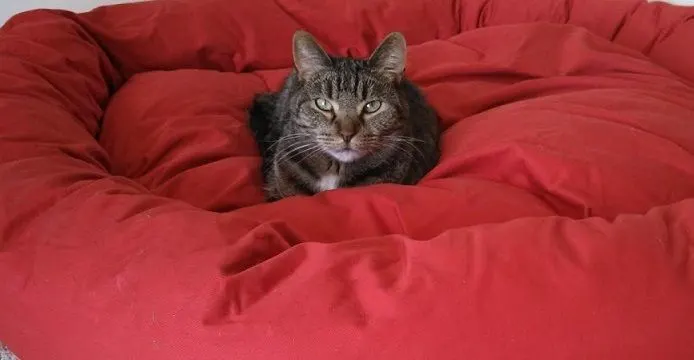
So the question is, should you feed your cat a low protein diet such as Hill’s K/D or is it better to feed a diet with more moderate protein such as Darwin’s kidney support?
There is no “right” answer here, but I believe a more moderate protein diet is best for a cat since cats are carnivores.
Which brings me to …
What to feed a cat with kidney disease?
While you or your cat’s vet might have an ideal diet for your cat in mind, the reality is you have to feed something your cat will actually eat!
My own CKD cat Scout gets a couple of options in rotation. He is definitely picky, so I mix it up for him to keep his interest and weight up.
The majority of my CKD cat’s diet includes:
- Darwin’s raw kidney support (prescription)
- Royal Canin Renal support canned (prescription)
I also mix in a small amount of Royal Canin renal support dry food (prescription).
Dry food is not ideal for a cat with kidney disease since the moisture is removed, but sprinkling a bit on my cat’s raw or canned food encourages him to eat more. He thinks kibble is a treat!
Now, here are some more details on options to feed your cat with kidney disease.
I’m going to share info on:
- Raw Diet prescription (Darwin’s)
- Canned and dry prescription (Hill’s or Royal Canin)
- Non-prescription canned options
Raw diet for cats with kidney disease
My cat Scout is in the process of switching to a mostly 100% raw diet from Darwin’s.
Darwin’s is a sponsor of That Mutt.
The reason I want my cat to eat a raw diet is because cats are carnivores and real, fresh meat is healthy for them! My dogs have also eaten a raw diet over the years. I believe it’s the healthiest option for most dogs and cats.
Darwin’s prescription raw food for cats
Darwin’s is the only company that offers raw cat food prescription formulas.
The company’s kidney support formula is specifically designed to meet the nutrition requirements for a cat with kidney disease. The food has a more moderate protein level than other prescription diets (48% protein on a dry matter basis), which is a huge plus!
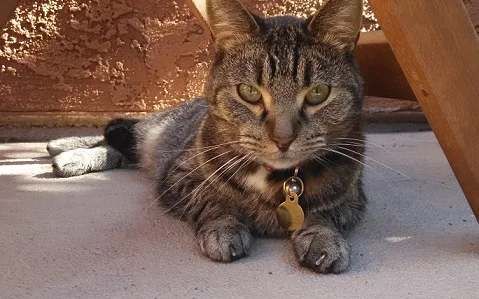
Darwin’s kidney support formula is:
- high moisture
- low phosphorus
- moderate protein!
- made with real, fresh meat
- hormone-free and antibiotic-free
- no grains, added fillers or chemical preservatives
The Darwin’s kidney support formula includes a natural phosphorus binder to reduce phosphorus absorption. It also has increased vitamin B levels to replace the vitamins CKD cats lose through frequent urination.
Learn more about the food here.
Since Darwin’s kidney support is a prescription diet, you will need a prescription from your cat’s vet to order.
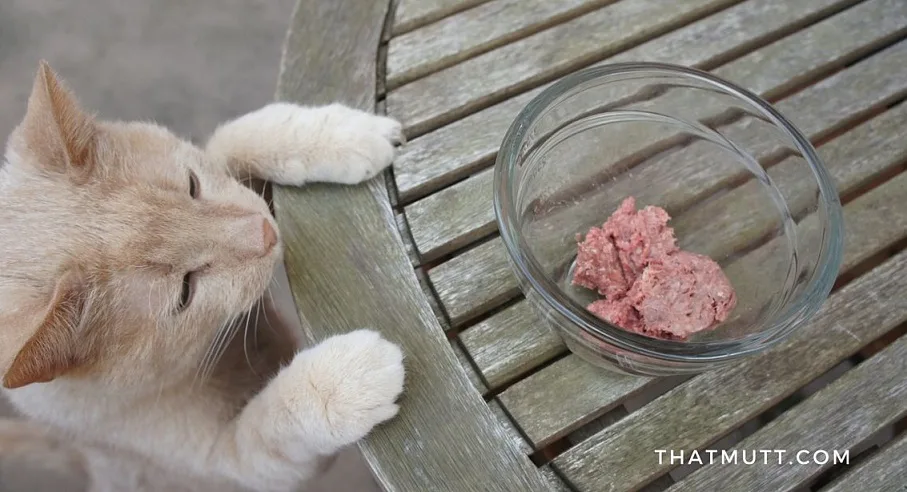
How to get a prescription from your cat’s vet
Darwin’s makes it really easy for you to get a prescription. You can simply send this link to your vet. If your vet would like to see the nutrition information of the food, here is a link to the guaranteed analysis.
If your cat’s vet is hesitant about feeding a raw diet, you can also suggested the idea of lightly cooking the meat. The company says that doing so will not cause the meat to lose its nutrients.
When your vet doesn’t support a raw diet
Unfortunately, not all vets are supportive of raw diets. I made the choice to find a new vet because Scout’s original vet politely declined not to discuss options beyond the brands she carried in her office.
I wanted healthier options for my cat so I was lucky to find a holistic vet in our area. The drive is 20 minutes further but it’s worth it to have a vet on board with what I believe in – feeding my pets natural, fresh food whenever possible.
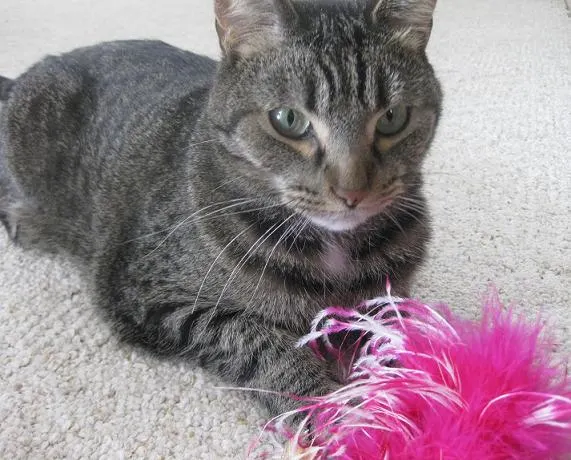
Homemade raw cat food for cats with kidney disease
Some people choose to feed a homemade raw diet or a homemade cooked diet to their cat with kidney disease using ingredients that include meat, organ meat, eggs and egg shells. Egg shells are typically used rather than raw bone because egg shells have less phosphorus than bone.
I am not experienced in homemade raw cat food recipes for cats with kidney disease, but it can be done with the right research and support of your vet.
Now, as much as I’d like to recommend a raw diet for all cats with kidney disease, I also know some people are not comfortable feeding a raw diet for whatever reason.
Here are some canned and dry food options …
Hill’s Science Diet K/D and Royal Canin prescription diets
If your cat has kidney disease, there is a good chance your vet will recommend:
- Hill’s Prescription Diet K/D (kidney disease) or
- Royal Canin Renal Support
Most vets in the U.S. sell one or both of these brands in a canned and dry version and there are several different flavors (and textures of canned food) to try.
Hill’s and Royal Canin prescription diets are designed to meet the health requirements of a cat with chronic kidney disease, but there are some drawbacks to these foods that I’ll get to now.
Potential issues with Hill’s and Royal Canin:
- The canned options are much healthier than dry food
- Royal Canin and Hill’s are low in protein – watch for weight loss
- Read ingredients – these foods contain grains & fillers
Raw or canned prescription food is healthier for cats than dry food of any kind.
The dry prescription food option is there for cats who are picky and refuse to eat canned or raw food. We know there are lots of picky cats out there! If you can’t get your cat to eat canned or raw food, add water to her dry food (if she’ll eat it) to help her get more water in her diet.
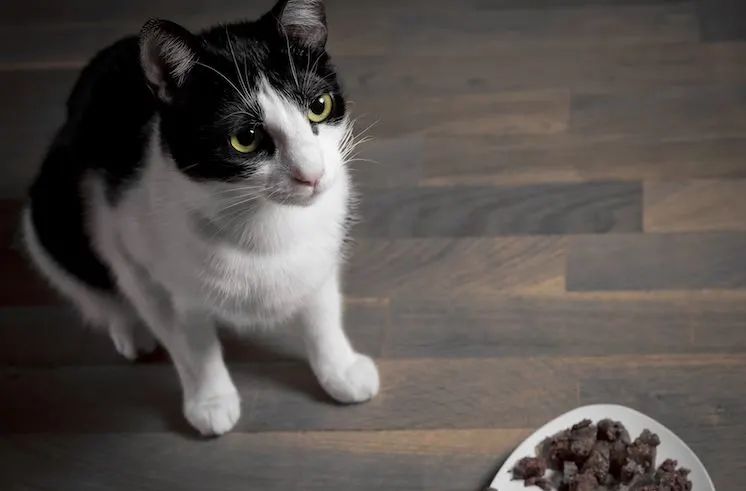
Since extreme weight loss is a side effect of kidney disease, you want to do what you can to keep your cat’s weight up.
For me, that means feeding a food with more moderate protein diet such as Darwin’s, but Royal Canin has a bit more protein than Hill’s.
Protein percentage in Hill’s, Royal Canin and Darwin’s by comparison:
- Hill’s KD canned pate with chicken: 30% (dry matter)
- Royal Canin canned renal support “E” flavor: 33.5% (dry matter)
- Darwin’s kidney support chicken: 48% (dry matter)
*I confirmed the above info with each company.
I highly recommend Darwin’s due to the more moderate protein level. You can also try mixing Darwin’s and Royal Canin as I do with Scout.
Ingredients in your cat’s food
It’s a good idea to read the ingredients of the food you choose to feed your cat.
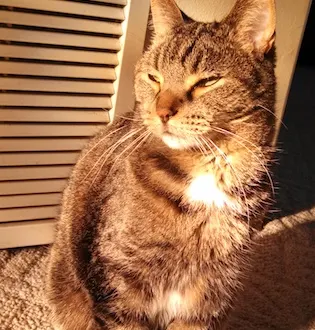
The ingredients in the Hill’s K/D dry food is not ideal for a carnivore. It contains brown rice and corn gluten meal as the top two ingredients. Here are the top 15 ingredients (from their website).
Hill’s K/D dry cat food (chicken):
Brown Rice, Corn Gluten Meal, Pork Fat, Ocean Fish, Cracked Pearled Barley, Whole Grain Wheat, Brewers Rice, Wheat Gluten, Chicken Liver Flavor, Egg Product, Soybean Oil, Pea Protein, Chicken Meal, Dried Beet Pulp, Fish Oil
The Hill’s renal canned food is better than their renal dry food. Here are the first 15 ingredients of the pate with chicken canned:
Hill’s prescription diet feline K/D canned (pate with chicken):
Water, Pork Liver, Chicken, Egg Product, Brewers Rice, Sugar, Chicken Fat, Chicken Liver Flavor, Modified Rice Starch, Powdered Cellulose, Fish Oil, Calcium Sulfate, Potassium Citrate, Guar Gum, Soybean Oil
By comparison, Royal Canin canned “E” flavor:
First 15 ingredients: Water sufficient for processing, pork by-products, chicken liver, chicken, chicken by-products, brewers rice flour, salmon, brewers rice, powdered cellulose, pork plasma, fish oil, potassium citrate, guar gum, calcium carbonate, carrageenan
And Royal Canin’s dry “A” flavor:
First 15 ingredients: Brewers rice, corn, chicken fat, wheat gluten, corn gluten meal, chicken by-product meal, soy protein isolate, powdered cellulose, natural flavors, wheat, chicory, fish oil, calcium carbonate, sodium silico aluminate, potassium chloride
You can see from the above examples how canned food has better ingredients than the dry food, in addition to having the moisture your cat needs.
Darwin’s kidney support is BY FAR the healthiest:
First 15 ingredients: Chicken Thigh Meat, Turkey Hearts, Chicken Hearts, Beets, Zucchini, Turkey Livers, Chicken Livers, Celery, Fish Oil, Egg Whites, Parsley, Gelatin, Oyster Shell Pwdr, Cod Liver Oil, Dandelion Root Pwdr, lnulin
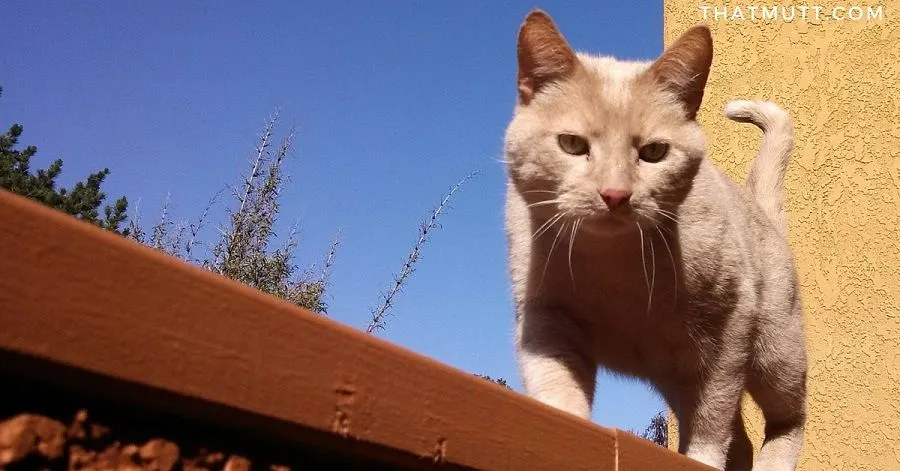
It’s not that Hill’s and Royal Canin are bad for your cat. They are designed for cats with kidney disease, and I give my own cat Royal Canin on rotation with raw food. It’s just that I want you to be aware of all options so you can make the best choice for your specific cat and situation.
Finally, I want to bring up the option of feeding your chronic kidney disease cat a non-prescription canned option …
Commercial cat food for cats with kidney disease
The reason I suggest this option is because:
- Prescription foods are expensive
- Low protein prescription foods can cause weight loss
- Some cats refuse to eat all of the prescription foods
Sometimes when your cat has kidney disease – especially later stages – it’s more important that your cat eats something, it doesn’t necessarily have to be prescription food.
Before feeding your cat a non-prescription food, you should discuss the best options with your cat’s vet. He or she might have some non-prescription options to recommend, and they may want you to add in a phosphorus binder.
What to keep in mind – cat foods low phosphorus
If you go with a non-prescription food, just know that it is NOT designed to meet the health requirements of a cat with kidney disease. However, with a lot of research you can find a food that has lower than average phosphorus levels, moderate protein and low sodium. (Of course, I’m oversimplifying. Always discuss with your vet.)
Also keep in mind that companies change their ingredients and recipes from time to time so just because a food works for your cat now doesn’t mean it will always be safe to feed.
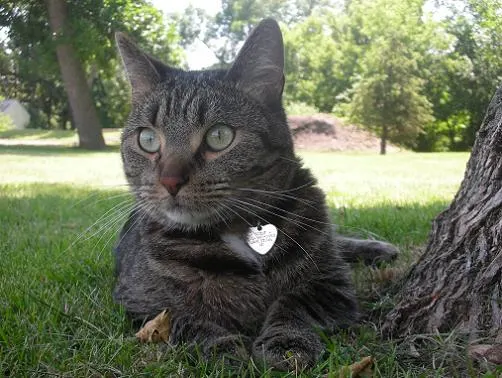
The following commercial cat foods are not necessarily recommended by any vet for a cat with kidney disease. They are recommendations on canned cat foods from cat lovers in the Facebook group I follow. Make sure to discuss with your vet before feeding in case he or she recommends you add a phosphorus binder.
Commercial cat food – Weruva
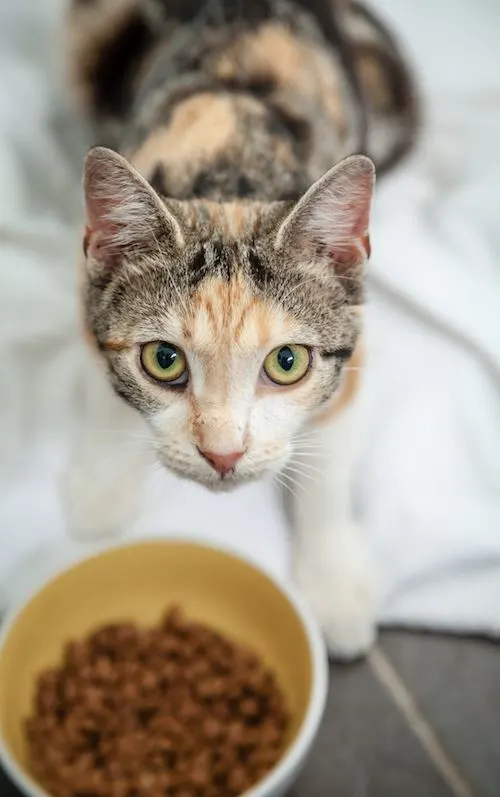
Weruva Canned Foods (chicken):
- Cloud 9 (dry matter: .73% phos & 43% protein)
- Stir it Up (dry matter: .72% phos & 42% protein)
- Live N Love (dry matter: .71% phos & 42% protein)
Weruva Chicken Pouches:
- Charge Me Up (dry matter: .73% phos & 43% protein)
- Text Me (dry matter: .73% phos & 42% protein)
All nutrition info for Weruva cat food can be found here.
Weruva uses real ingredients in their recipes.
First 15 ingredients in the Weruva Cloud 9 canned food:
Chicken, Chicken Broth, Natural Flavor, Tapioca Starch, Guar Gum, Potassium Chloride, Tricalcium Phosphate, Celery Powder, Choline Chloride, Taurine, Salt, Vitamin E Supplement, Zinc Oxide, Reduced Iron, Thiamine Mononitrate (Vitamin B1)
Hi Tor Neo cat food
I just learned about a commercial, non-prescription cat food called Hi Tor Neo that is designed to be low in phosphorus and low in protein. It does not require a prescription from your vet, however I would be cautious because of the low protein levels.
Also note that this brand uses “veterinary select” in it’s branding but it’s not actually a prescription diet backed by the same research as the veterinary prescription diets mentioned earlier in this article.
So what is the best food for a cat with kidney disease?
There is no right answer but I hope this article has helped you learn more about what to look for in a food and that there are options beyond what some vets initially recommend.
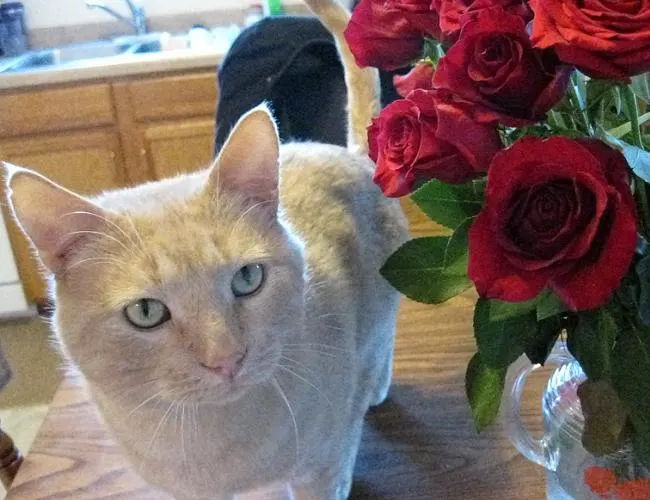
When a vet hands you a bag of dry food from Hill’s, just know that their intentions are good but there are healthier options to consider.
If you have questions about this article, make sure to discuss with your vet. My article is only meant as one piece of your ongoing research. You have to be the best advocate for your own cat.
And by all means, find a new vet or get a second opinion if your current vet is not open to discussing multiple options.
What do you feed your cat with kidney disease?
Let me know in the comments what you feed your kitty, and I hope your cat is feeling good and healthy for as long as possible.
Finally, what is the best diet for dogs with kidney disease?
While this article focuses on cats, much of the same information applies to dogs with kidney disease.
If your dog has kidney disease, I would start by considering the Darwin’s raw kidney support formula for dogs.
If a raw diet is too expensive or your dog doesn’t like raw food, then there are kidney support options for dogs from Hill’s K/D and Royal Canin just as there are options for cats.
-Lindsay, Scout & Remy
Lindsay Stordahl is the founder of That Mutt. She writes about dog training and behavior, healthy raw food for pets and running with dogs.
Related posts:

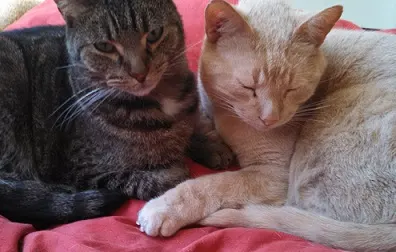
ckd and diabetes 2 cat owner
Tuesday 27th of July 2021
Hello Lindsay and readers,
I'd like to mention cats (unlike what most people think) are strictly carnivorous. Stews, potatoes..all those things that look cute to feed are also putting strain on a cat's digestive system (which is by the way conceived only for prey digestion: cats have not evolved much since the old days).
Feeding any ingredient other than animal food is also having a negative impact on the kidneys. (protein isolates of non animal source remains potentially one of a few exceptions. Every cat is different. What works for one cat may not work for another) I have read your article as I'm researching more and more about CKD feeding advice and just wished to share this. For anyone in general please refer to a cat's anatomy. Learn about it and understand the true needs of a cat in order to feed him/her the best way possible.
I also feel that cats need periods of liquid detox ( in nature, in the wild: they do not have guaranteed prey at the hour of their choosing so they are able to withstand periods of empty stomach with no problem. ) In this sense, I am giving my cat "oralade" to help with cleansing (this comes to 100 ml of oralade per day in 3 takes plus rest of the meals i give her appropiate diet.
loads to comment on..
Kind regards
ps: feed animals to your cat which are closest to their natural preys: birds, rabbit, hares & small mammals (eggs, pork, beef etc: they do not eat this in the wild yet of course it is tolerated, the question remains whether feeding these tolerated foods is actually also having a subtle, gradual, negative impact on their health)
i feed my cat a lot of chicken cause i feel is similar to a bird :)) i plan finding rabbit and hope my cat likes it!!
currently i am looking for the perfect meal : a mixture of meat, offal, bones etc i am looking for the best provider or how to get the best quality mix
Michelle
Saturday 25th of January 2020
My vet prescribed RenaPlus powder twice a day to add to my 19 year old cat's wet renal diet. She also suggested I add Dasuquin once a day. What are your thoughts on this?
Lindsay Stordahl
Wednesday 14th of October 2020
I am not familiar with those products but if your vet suggests them, I'm sure there are good reasons.
Carol Brandt
Friday 23rd of August 2019
Never mind, the subscription line just popped up, lol.
Carol Brandt
Friday 23rd of August 2019
Good article, but I want to know how to subscribe.